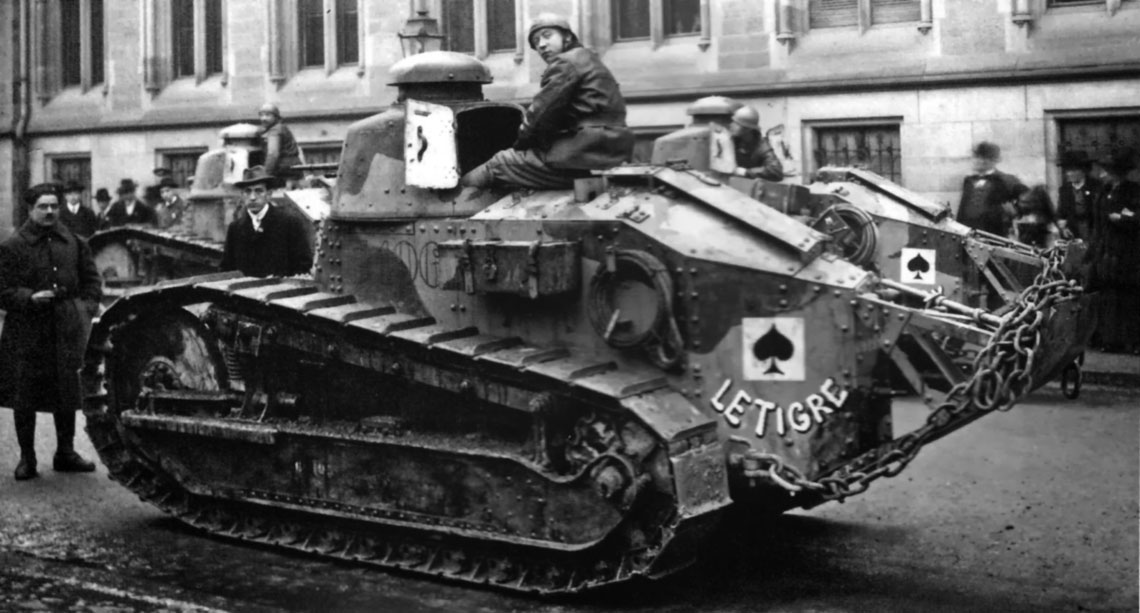
Tanks. The first hundred years, part 1

Tanks. The first hundred years, part 1
Exactly 100 years ago, on September 15, 1916, on the fields of Picardy on the Somme River in northwestern France, several dozen British tanks first entered the fray. Since then, the tank has been systematically developed and to this day plays a very important role on the battlefield.
The reason for the appearance of tanks was the need, born in the bloody clashes in the muddy trenches of the First World War, when the soldiers of both sides shed a lot of blood, unable to get out of the positional stalemate.
Trench warfare was unable to break the traditional means of combat, such as armored cars, which could not get through the barbed wire fences and intricate trenches. A machine that could do this caught the attention of the then First Lord of the Admiralty, Winston S. Churchill, although this was certainly not his job. The first design considered was a car on a wheel "with legs", that is, movable supports installed around the circumference of the wheel, which adapted to the terrain. The idea for such a wheel belongs to Brama J. Diplock, a British engineer who built off-road tractors with such wheels at his own Pedrail Transport Company in Fulham, a suburb of London. Of course, this was one of the many "dead ends"; wheels with "legs-rails" proved to be no better off-road than conventional wheels.
The caterpillar chassis was first successfully put into production by Maine blacksmith Alvin Orlando Lombard (1853-1937) on agricultural tractors he built. On the drive axle, he installed a set with caterpillars, and in front of the car - instead of the front axle - steering skids. Throughout his life, he "issued" 83 of these steam tractors, putting them in 1901-1917. He worked as a hammer because his custom-made Waterville Iron Works in Waterville, Maine, made just over five cars a year for those sixteen years. Later, until 1934, he "produced" diesel caterpillar tractors at the same pace.
Further development of tracked vehicles was still associated with the United States and two design engineers. One of them is Benjamin Leroy Holt (1849-1920). There was a small automobile wheel factory in Stockton, California owned by the Holts, the Stockton Wheel Company, which began making tractors for steam farms in the late 1904 century. In November 1908, the company introduced its first diesel tracked tractor, designed by Benjamin L. Holt. These vehicles had a front torsion axle that replaced the skids previously used with wheels, so they were half-tracks like the later half-tracks. Only in XNUMX, a license was bought from the British company Richard Hornsby & Sons, according to which the entire weight of the machine fell on the tracked chassis. Since the issue of controlling the drive difference between the left and right tracks was never resolved, turning issues were resolved by using a rear axle with steerable wheels, the deviation of which forced the car to change direction. .
Soon production was in full swing. During World War I, the Holt Manufacturing Company supplied over 10 tracked tractors purchased by British, American and French forces. The company, renamed the Holt Caterpillar Company in 000, became a major company with three plants in the United States. Interestingly, the English name for the caterpillar is "track" - that is, the road, the route; for a caterpillar, it is a kind of endless road, constantly spinning under the wheels of a vehicle. But company photographer Charles Clements noticed that Holt's tractor crawled like a caterpillar - a common butterfly larva. That is "caterpillar" in English. It was for this reason that the name of the company was changed and a caterpillar appeared in the trademark, it is also a larva.